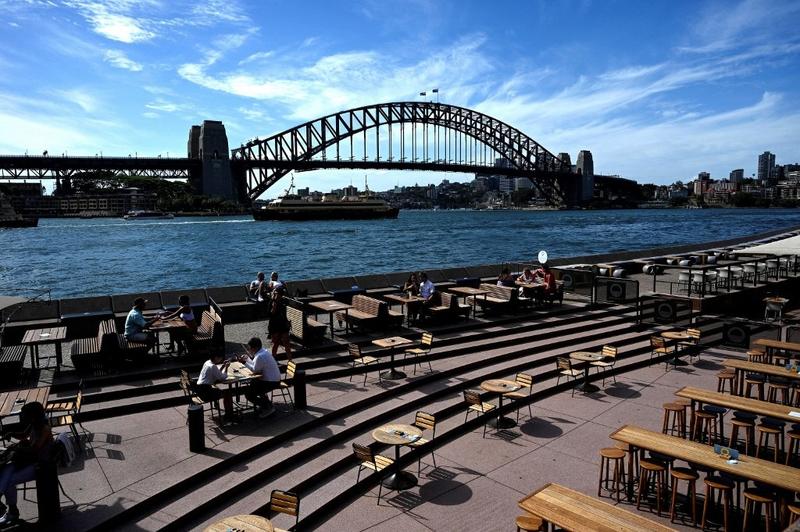 This general view shows seating for restaurants mostly empty along Sydney Harbour in Sydney on Dec 24, 2020 amid the COVID-19 pandemic. (SAEED KHAN / AFP)
This general view shows seating for restaurants mostly empty along Sydney Harbour in Sydney on Dec 24, 2020 amid the COVID-19 pandemic. (SAEED KHAN / AFP)
CANBERRA - Australia's greenhouse gas emissions have fallen to the lowest level since 1995 as coronavirus restrictions limited travel.
Data released by the Department of Industry, Science, Energy and Resources on Friday revealed that emissions fell by 4.4 percent in the 12 months to September 2020.
The decline was largely driven by a 10.2-percent decrease in emissions from transport as a result of work-from-home directions and border closures to prevent the spread of COVID-19
The fall was largely driven by a 10.2-percent decrease in emissions from transport as a result of work-from-home directions and border closures to prevent the spread of COVID-19.
ALSO READ: Australia urged for 'ambitious' climate action in trade negotiations
Australia's emissions have now declined by 21.7 percent from their peak in 2007 and by 19 percent from 2005 - the baseline year for the country's 26-28 percent reduction target by 2030 under the Paris climate agreement.
Globally emissions fell by a record 7 percent in 2020.
However, emissions in Australia and across the world are expected to rebound in 2021 as restrictions around the world ease and international travel resumes.
READ MORE: Australian PM faces revolt over net-zero emissions target
Minister for Energy and Emissions Reduction Angus Taylor said that investing in low emissions technologies will enable Australia's "continued success" in meeting emissions reduction targets.
"These results reflect significant long-term structural declines in emissions from the electricity and agriculture sectors, and a temporary decline in emissions from agriculture (due to the drought) and transport (due to coronavirus restrictions)," he said in a statement on Friday.



